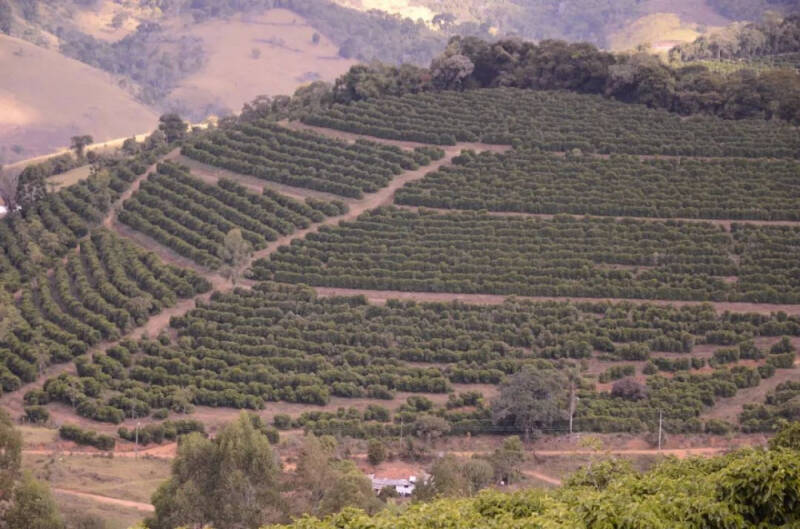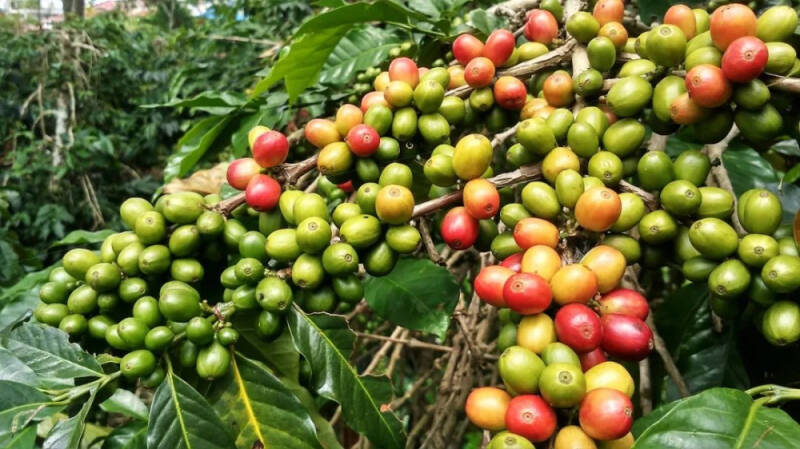The price of coffee beans has been unstable recently due to abnormal weather in Brazil and a decline in Vietnamese production and exports.
Recently, according to Nasdaq, coffee bean prices have been unstable recently, as major coffee producing and exporting countries have been affected to varying degrees, Brazil's production is affected by the weather, while Vietnam's coffee supply is tight. Coffee exports fell 20% in February from a year earlier to 160000 tons.
Parts of Brazil are currently affected by drought, resulting in high temperatures of more than 40 ℃ in some coffee producing areas, lower-than-average cumulative rainfall and repeated and unpredictable weather changes. In addition, the Minas Gerais area improved slightly, and the Somar Meteorological Bureau reported that the weekly rainfall in Minas Gerais was 59.5 millimeters, 131% of the historical average.

The good news is that StoneX, an investment bank, said after a survey of Brazil's major coffee producing areas that Brazilian coffee production is expected to increase by 4.2 per cent in 2024 to 25 compared with the previous year. Although the impact of the weather led to a reduction in production in a single producing area, the increase in acreage eventually contributed to the increase in total production.
In Vietnam, Robusta prices have risen due to tight supply of Robusta coffee in Vietnam, which has also affected the country's coffee exports. Although total coffee exports from January to February rose 16.2 percent year-on-year to 398000 metric tons, Vietnamese coffee exports fell 32.8 percent in February compared with January and 20.1 percent year-on-year to 160000 metric tons, according to the National Bureau of Statistics of Vietnam. But the country says the Lunar New year holiday is the main reason for the decline in coffee exports in February. And at present, Vietnam exported about 12 million bags of coffee per month in 2023x24, still an increase of 3.96 percent over the same period last year.

But earlier, Vietnam's Ministry of Agriculture had predicted that Vietnam's coffee production could fall by 10% to 1.656 million metric tons in 2023 due to drought caused by El Ni ñ o. Due to the decline in production, the price of coffee in Vietnam remains high, and the recent price of coffee in the central highlands is 7900-81 million dong / ton. In addition, the El Ni ñ o phenomenon will end around April this year, and production has the opportunity to increase.
In addition, although the Red Sea problem continues, but at present, major shipping companies are looking for strategies to reduce costs. For example, the shipping giant Dafei Group said that after reassessing the situation in the southern Red Sea, there are conditions to resume transit, but as the situation is still changing, Dafei Group cannot guarantee the smooth resumption of flights. And the good news is that a container ship from Dafei passed through the Red Sea under the escort of the French navy. In addition, Hebrot Shipping has introduced an inland freight solution that allows ships to avoid the Red Sea while saving detour time, through which coffee prices are likely to fall.
Important Notice :
前街咖啡 FrontStreet Coffee has moved to new addredd:
FrontStreet Coffee Address: 315,Donghua East Road,GuangZhou
Tel:020 38364473
- Prev

OATSIDE is suspected of being attacked? Netizen: can I help you?
▲ Click to follow | Daily boutique Coffee Culture Magazine Coffee Workshop for consumers who do not like bitter coffee, lattes with milk are usually their choice, but this classic coffee drink without bitterness is not friendly to people who are lactose intolerant. A traditional latte is good for their health.
- Next

All of a sudden! Get caught impersonating Starbucks!
▲ Click to follow | Daily boutique Coffee Culture Magazine Coffee Workshop March 1, Shanghai Qingpu police successfully smashed a fake trademark gang of registered well-known coffee brands in a special operation "sharpen Sword 2024" and arrested 17 suspects, involving a sum of more than 40 million yuan. It started in 2023.
Related
- Caught off guard! Starbucks '15-year-old store quietly closes!
- Naixue Drink drank a stone and claimed a claim was retaliated by the merchant?!
- What is the difference between a cake filter cup and a V60 conical filter cup? What are the advantages and disadvantages of the flat-bottomed filter cup brewing solution?
- What is the difference between fine coffee powder and medium coarse coffee powder? Do I need to sift out the fine coffee powder for making coffee by hand?
- Why does hot American coffee taste bitter? Difference in proportional concentration between hot American and ice American
- Is espresso stored overnight in the refrigerator harmful to your body? Is frozen coffee better than freshly ground coffee?
- What parameters and proportions of water temperature should be used to grind and brew fresh coffee beans? Why can't I drink freshly roasted coffee right away?
- Customers have "changed" Manner's new products! Shop assistant: Please don't mess around!
- Remove sockets in customer areas at Starbucks stores?! Netizen: I won't go if I really tear it down
- What is the difference between the taste steps of sun-dried coffee and washed coffee? Why is sun-cured coffee sweeter and washed coffee sour?

